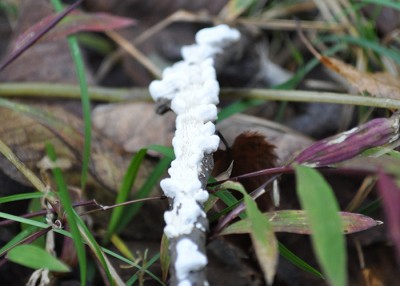As fall earns its name more and more, and leaves are falling to the ground with the occasional twig or pine needle, what shall happen to our befallen once-green friends on high? Many routes to decomposition are available for these post-picture perfect pieces of our trees. The most common or maybe the most whimsical of the forms of decomposition are Alice in Wonderland‘s leading roles, or a tasty treat in our burgers or salads: the mystical mushroom! Funky fungi sprout up all over the place this time of year with many a different type, shape and size.
Mushrooms are type of eukaryotic organism — not a plant — that are actually just the equivalent to a flower or seed being part of a tree, not the entire organism. The common word “mushroom” describes the fleshy, spore-bearing fruiting body of a fungus. The fungi itself is underground or on a food source, often as a system of small root-like structures, known as “mycelium.” Mycelium is thin, cylindrical, and threadlike, a few micrometers in diameter and only a few centimeters in length. These small hairs grow through soil or decaying wood and leaves and create a vast network of growth that can become an organism larger in mass than in volume. The mushrooms we know and love then sprout out of this network of mycelia, often in a large circle above the root system commonly called a “fairy ring.”
Many of these mushrooms take advantage of the cool damp conditions of fall to spread their spores and reproduce. While some mushrooms are edible — and delicious at that! — it is often safer to only consume fungi you buy from your local fun guy at the market or grocery. While some edible tasty treats, such as the Morel (Morchella), Hen of the Woods (Grifola frondosa), Button Cap (Agaricus bisporus) or Portabella do exist out there, so do deadly and poisonous mushrooms such as the Destroying Angel (Amanita ocreata), Death Cap (Amanita phalloide) and Satan’s Boletus (Boletus satanas).
So as you hike along, feel free to take pictures, draw a sketch, or sit and imagine a small gnome sitting nearby, but leave the eating for professionals and serious hobbyists. Mushrooms provide an air of mystery and intrigue to our woodland, thoughts of tales from yesteryear of witches, wizards, gnomes, or fairies. Although we may have grown out of our Halloween costumes and story books, there might still be some magic out there if you take the time to hike and look for these intriguing little additions to our Pennsylvania forest floors.
For some helpful mushroom info right here in PA, we have the Mushroom Cap! A mushroom museum and store with educational shows and exhibits as well as gifts and mushrooms. If you have a knack for identification and want to learn some more, here is a great web site called MyCoKey to help you on your way.
~ Edward “Billy Goat” Sinnes, Fall 2012 Intern



